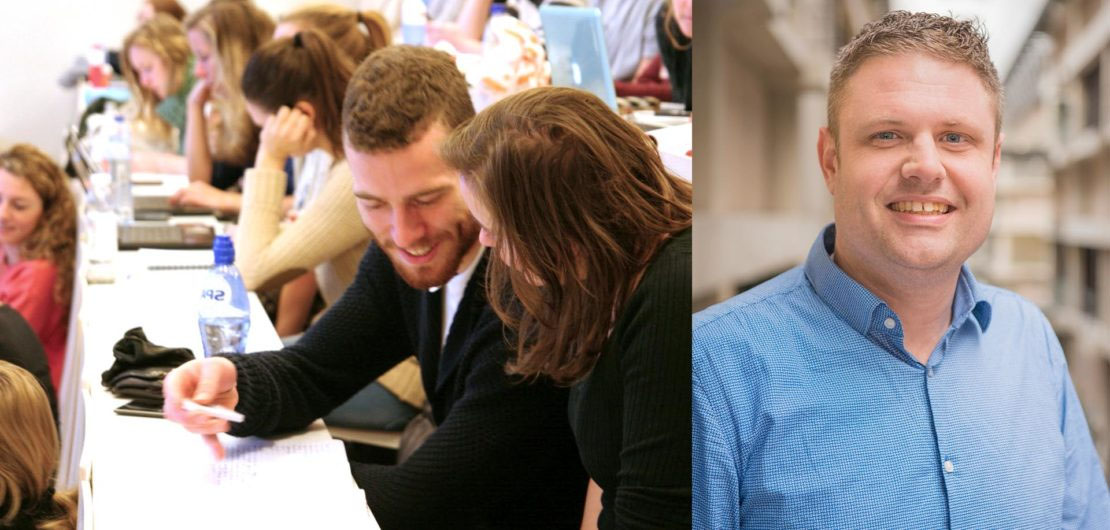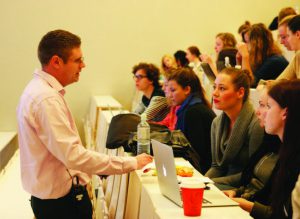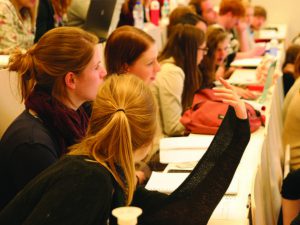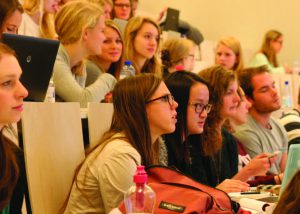
Interactive teaching for large groups
About
| Course | Pathophysiology and Neuropharmacology |
| Lecturer | Erwin van Vliet |
| Context | Part of the BSc Psychobiology, this course focusses on the pathological mechanisms of various brain disorders, as well as the pharmacological treatment of these disorders. |
| Challenge | Student numbers were rising and there were not enough resources to continue the tutorial sessions. |
| Intervention | Flipped-class pedagogy in combination peer instruction using an online voting system during class. |
| Evaluation | The evaluation showed that the students liked the flipped-class and peer instruction very much. |
Can you tell something about your course before the innovation?
In previous years the course consisted of lectures from several experts in the field, combined with tutorials. While lectures were given for the whole group, tutorials were given in multiple smaller groups and several teachers were involved in these parallel workgroups. Over time, student numbers were rising and the expectation was that about 200 students would register for this course. Although the students indicted in evaluations from previous years that they liked the tutorials very much and learned a lot, there were not enough resources to continue the tutorials.
What intervention was chosen?
Flipped-class pedagogy in combination with peer instruction using an online voting system during class. Students were asked to post questions at exam level on an online discussion board about the topics that were taught in the previous days. They could use their notes, the presentation provided by the teacher or make use of video recordings of all the lectures which were provided to the students.
Did it solve the issue?
Using this intervention it is possible for one teacher to provide tutorials for a large group of students in which students actively participate.
How was the students’ experience?
The evaluation showed that the students liked the flipped-class and peer instruction very much. In order to determine whether this intervention lead to a better performance we investigated the effects of this intervention on motivation and learning strategies using a controlled, pre- and posttest approach. Our data showed that flipped-class pedagogy enhanced student metacognition and collaborative-learning strategies (Van Vliet et al., CBE Life Sci Educ 2015,14(3):1-10).
Are you going to use it again?
Flipped-class and peer instruction will also be used in future courses. Based on our research we recommend the use of this intervention throughout the curriculum. We typically observe a decrease in the number of students that prepare (on a voluntary basis) for the classes during the course. Therefore, the aim of this year was to increase the participation of students by team-based learning. Our recent data show that team-based learning could attenuate the decline in participation that is commonly observed when students are studying individually.
How much (extra) work did it cost you?
Getting to know the tools that are needed for flipped-class and peer instruction takes some time, but it definitely outweighs the benefits. The software needed is very user friendly and can be implanted easily.
Do you recommend this approach to other lecturers?
I certainly recommend the flipped-class pedagogy in combination with peer instruction and team-based learning. It improved metacognition and collaborative-learning strategies, which most likely enhance “deep learning”.
Is there anything else you’d like to add?
If you like to know more about flipped-class pedagogy in combination with peer instruction and team-based learning, feel free to contact me or follow these links.
- Good practice video “peer instruction using voting system”
- Paper: Flipped-Class Pedagogy Enhances Student Metacognition and Collaborative-Learning Strategies in Higher Education But Effect Does Not Persist









